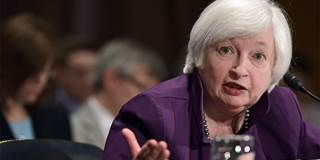 Ron Sachs/ZumaPress
Ron Sachs/ZumaPress
美国货币紧缩史的警示
伯克利—在过去四十年中,美联储四次着手收紧货币政策。在这四次中,每一次紧缩都引发了就业和产出降低的过程,并且下降幅度之大远超美联储工作人员的预测。美联储已准备好再次收紧货币政策,考察这段历史——以及当前经济状况——表明美国马上就要进入危险区域了。
1979—1982年间,时任美联储主席保罗·沃克尔(Paul Volker)改变了当局的货币政策方针。他的预期是,通过控制流通中货币量,美联储可以在更大幅度地降低利率的同时以比传统凯恩斯主义模型所预测的更小的幅度增加闲置产能和失业。
对美联储——以及美国经济——来说,不幸的是凯恩斯主义模型才是对的;它们关于不通胀(disinflation)的代价的预言完全正确。此外,这一货币紧缩期带来了预料外的后果;花旗集团等金融机构发现,救它们于破产的完全是监管宽容(regulatory forbearance),许多拉美国家陷入了长达五年以上的萧条。
https://prosyn.org/ezLJqHyzh
To continue reading, register now. It’s free!
Register Now
Already have an account?
Log in



伯克利—在过去四十年中,美联储四次着手收紧货币政策。在这四次中,每一次紧缩都引发了就业和产出降低的过程,并且下降幅度之大远超美联储工作人员的预测。美联储已准备好再次收紧货币政策,考察这段历史——以及当前经济状况——表明美国马上就要进入危险区域了。
1979—1982年间,时任美联储主席保罗·沃克尔(Paul Volker)改变了当局的货币政策方针。他的预期是,通过控制流通中货币量,美联储可以在更大幅度地降低利率的同时以比传统凯恩斯主义模型所预测的更小的幅度增加闲置产能和失业。
对美联储——以及美国经济——来说,不幸的是凯恩斯主义模型才是对的;它们关于不通胀(disinflation)的代价的预言完全正确。此外,这一货币紧缩期带来了预料外的后果;花旗集团等金融机构发现,救它们于破产的完全是监管宽容(regulatory forbearance),许多拉美国家陷入了长达五年以上的萧条。